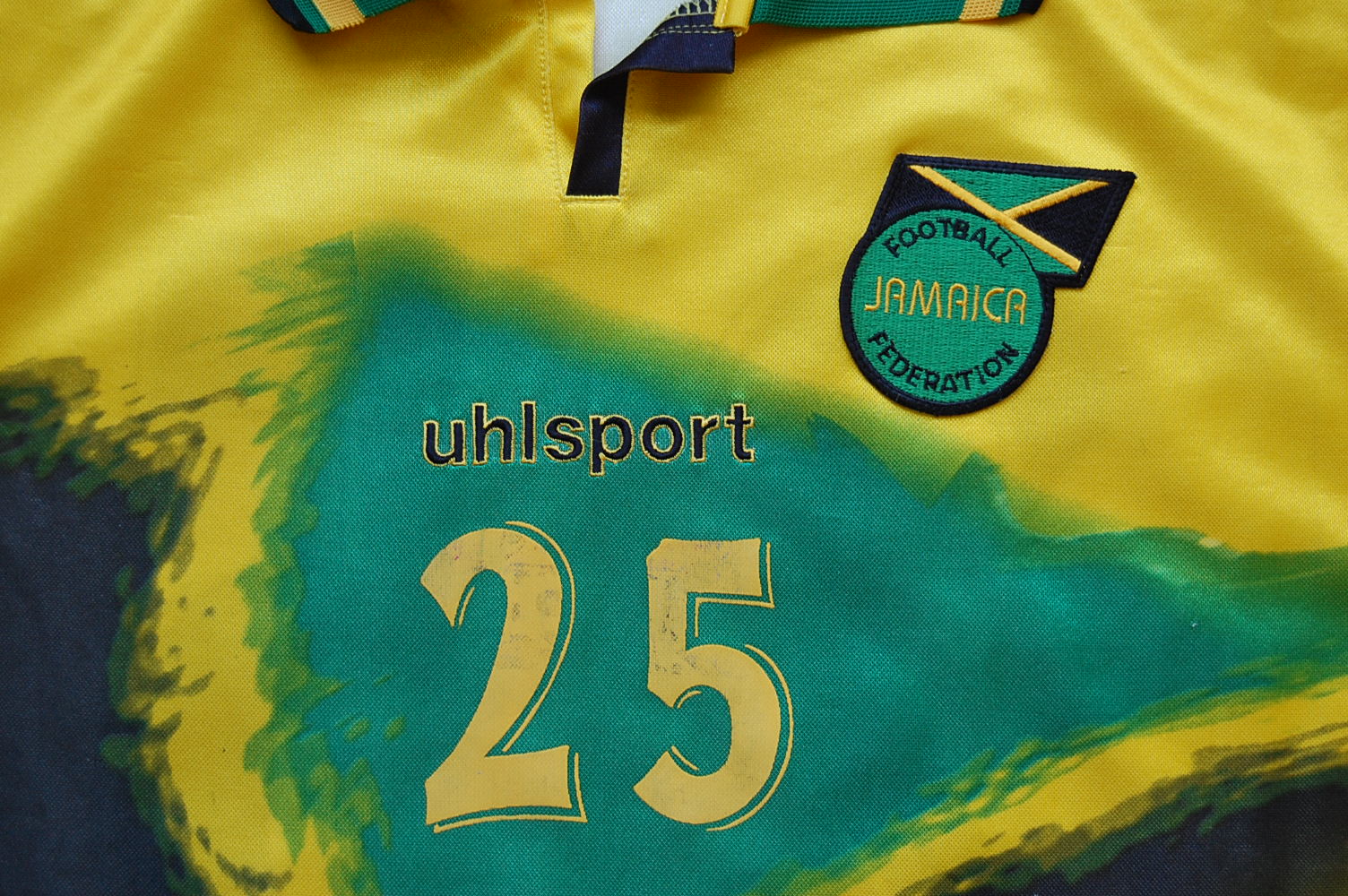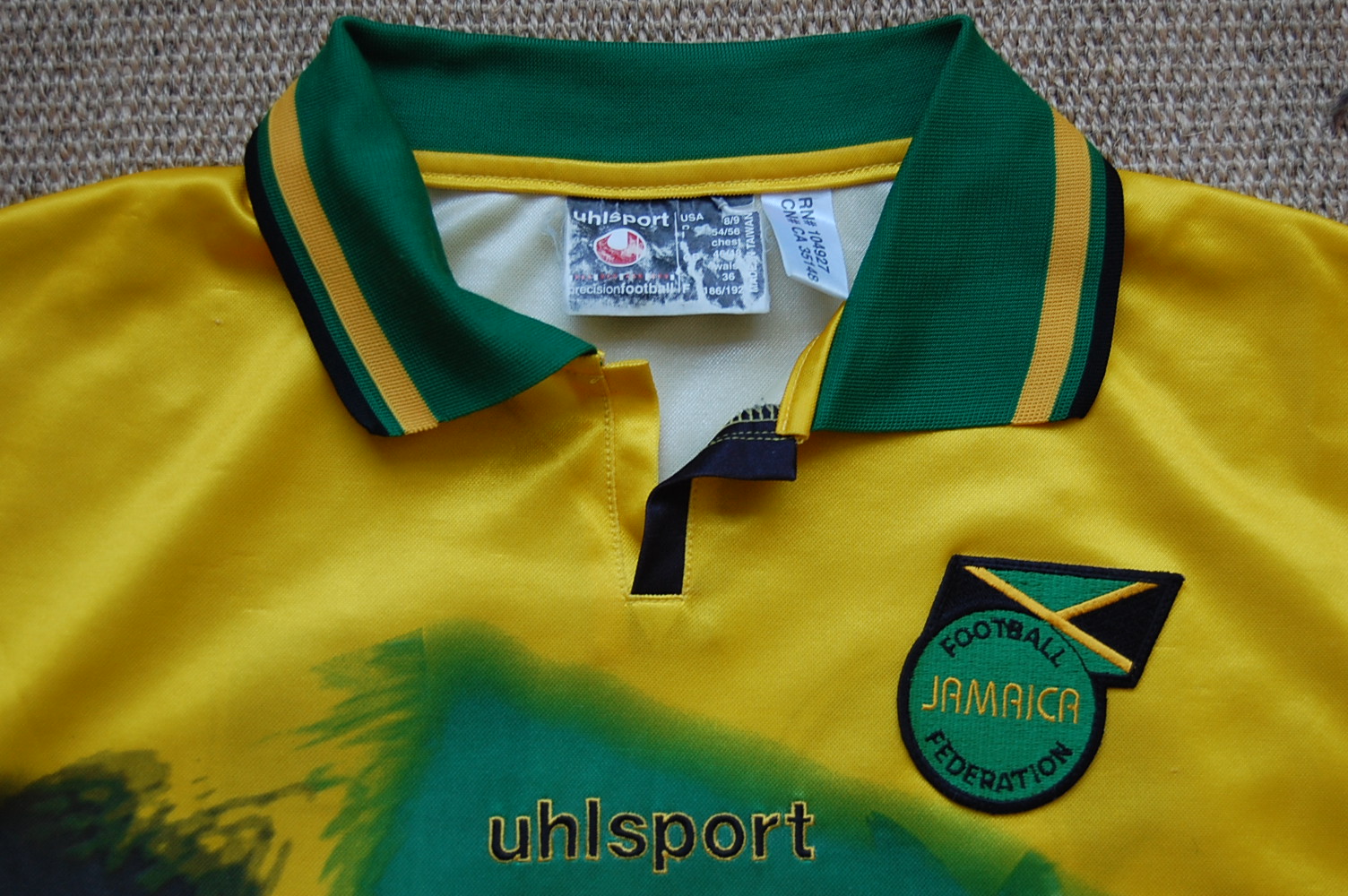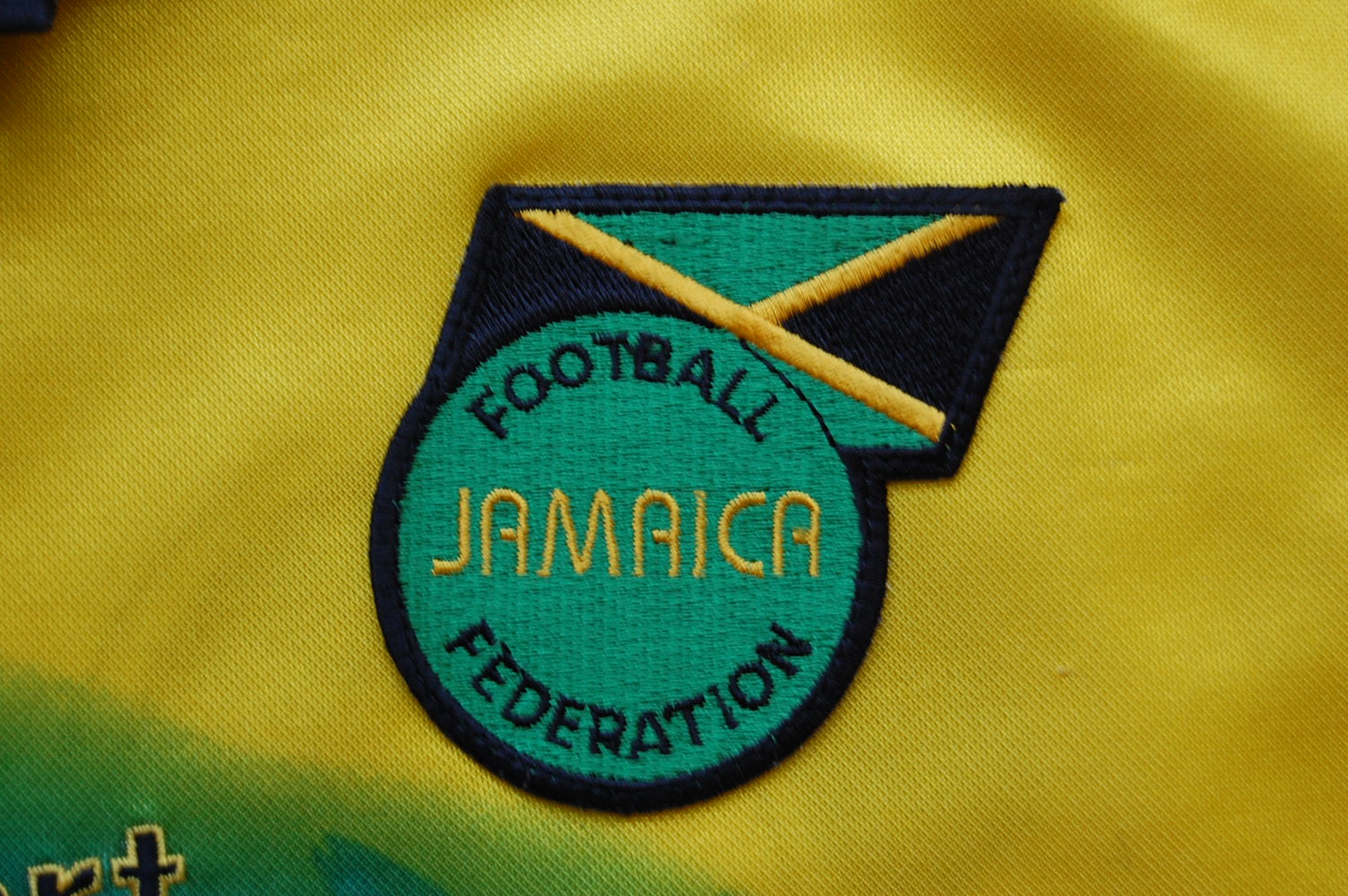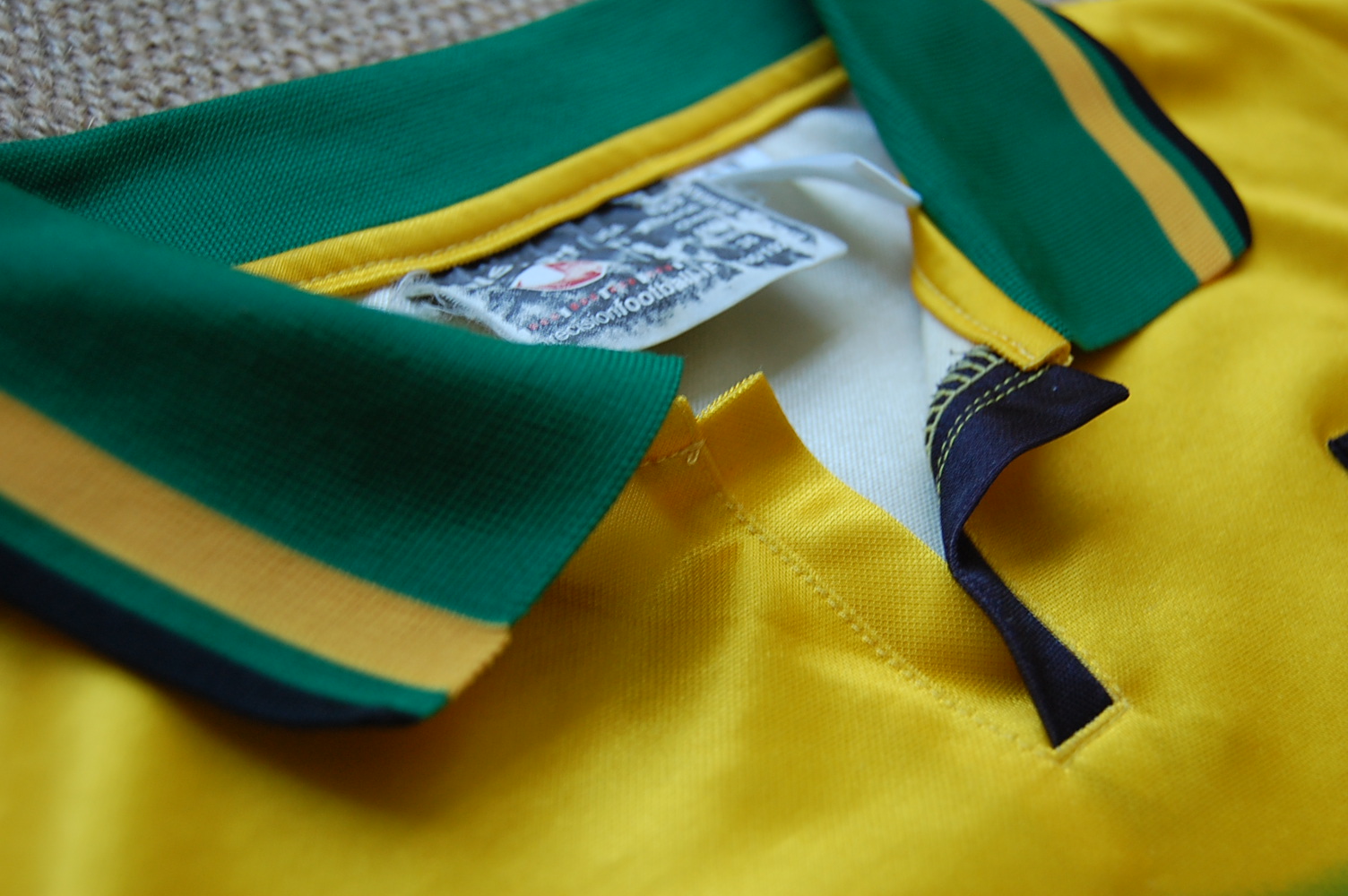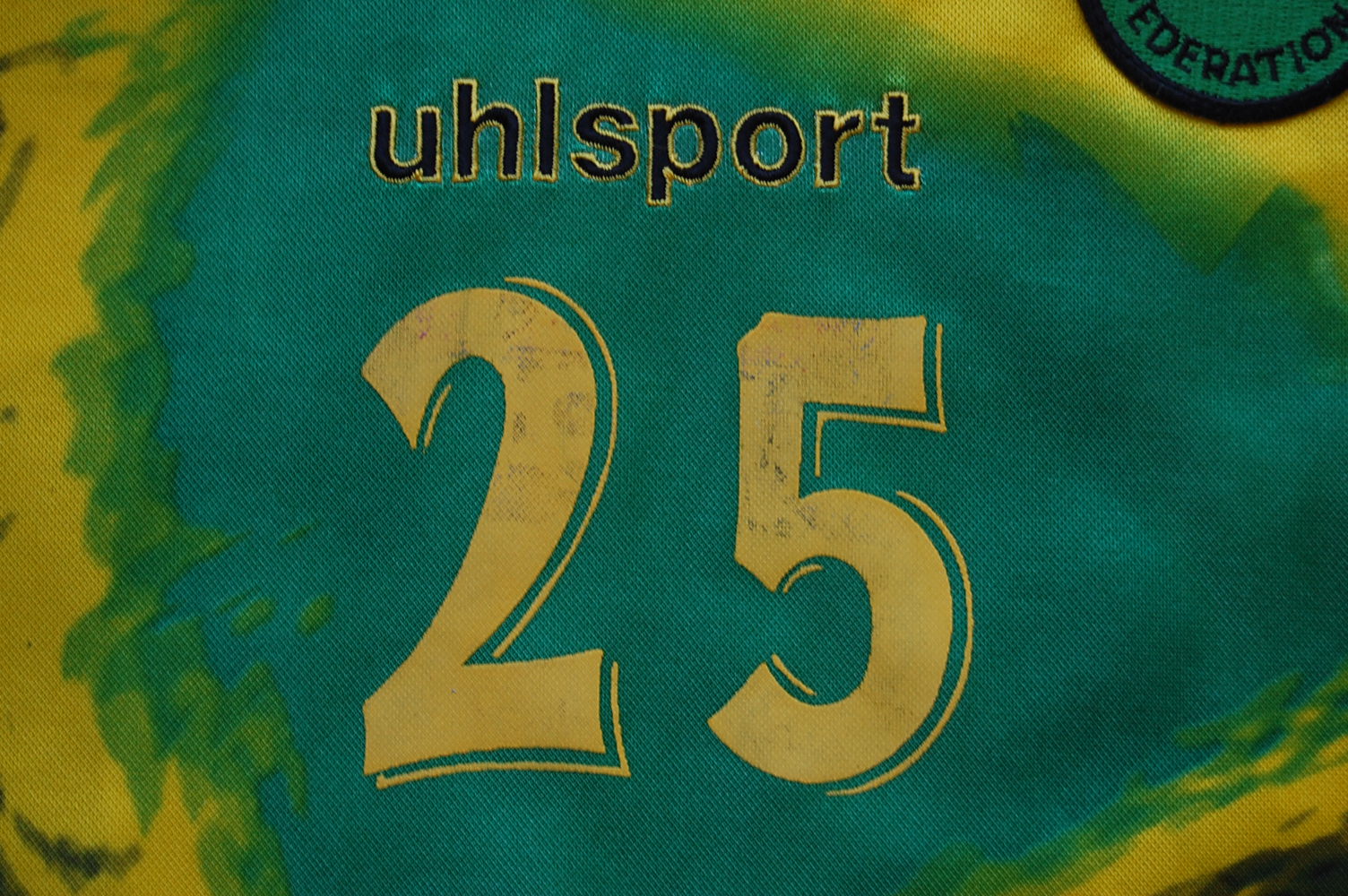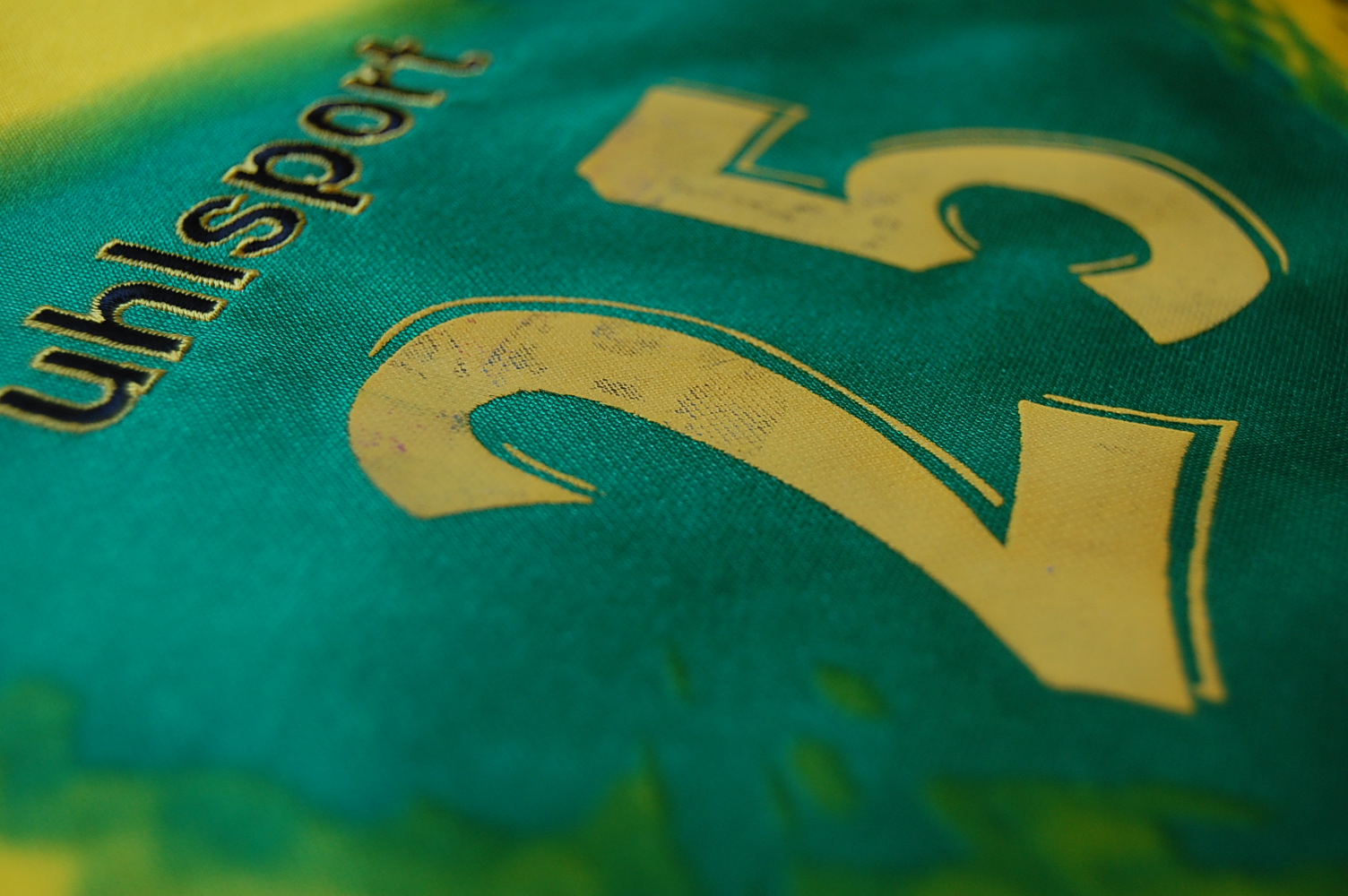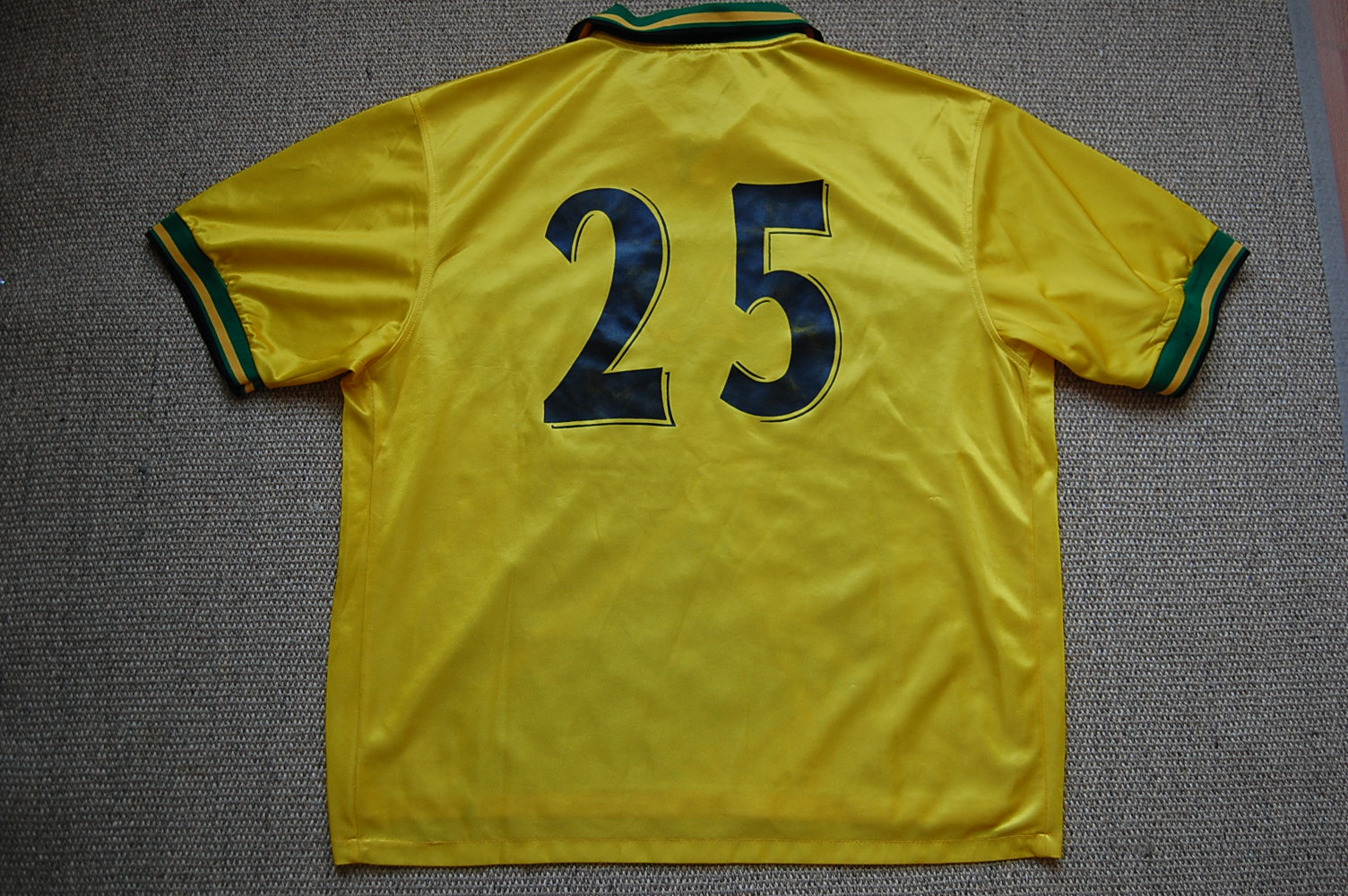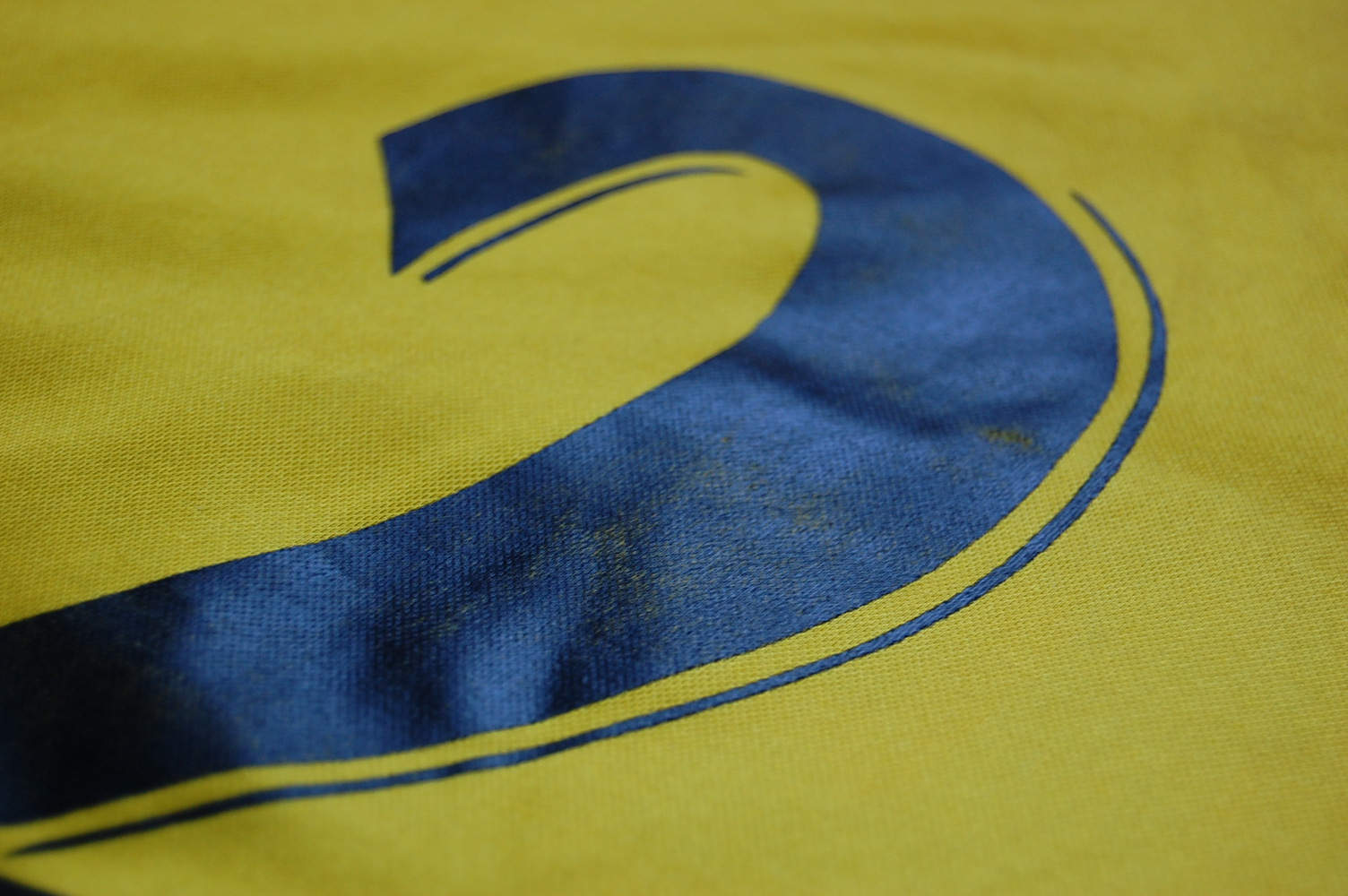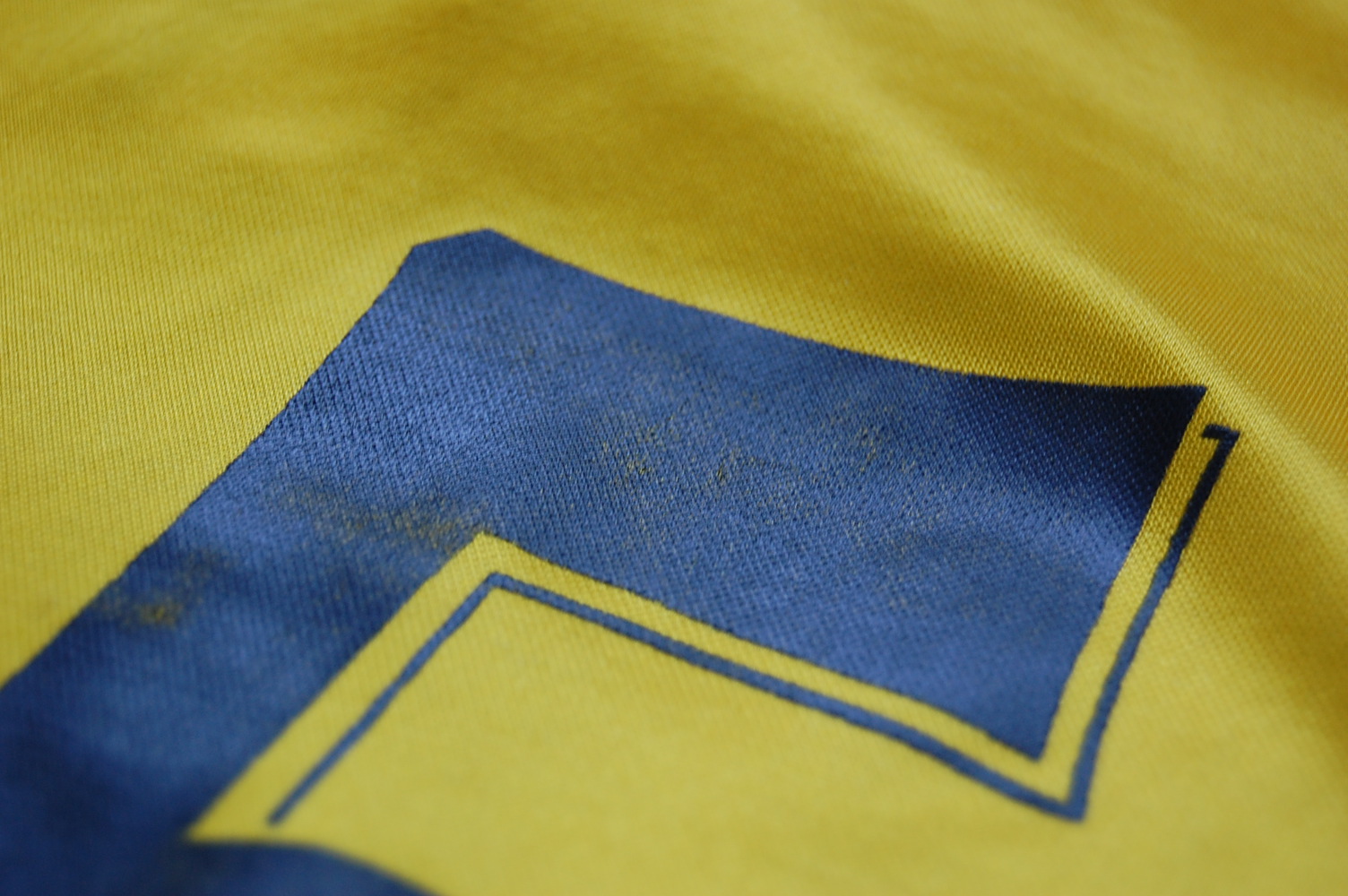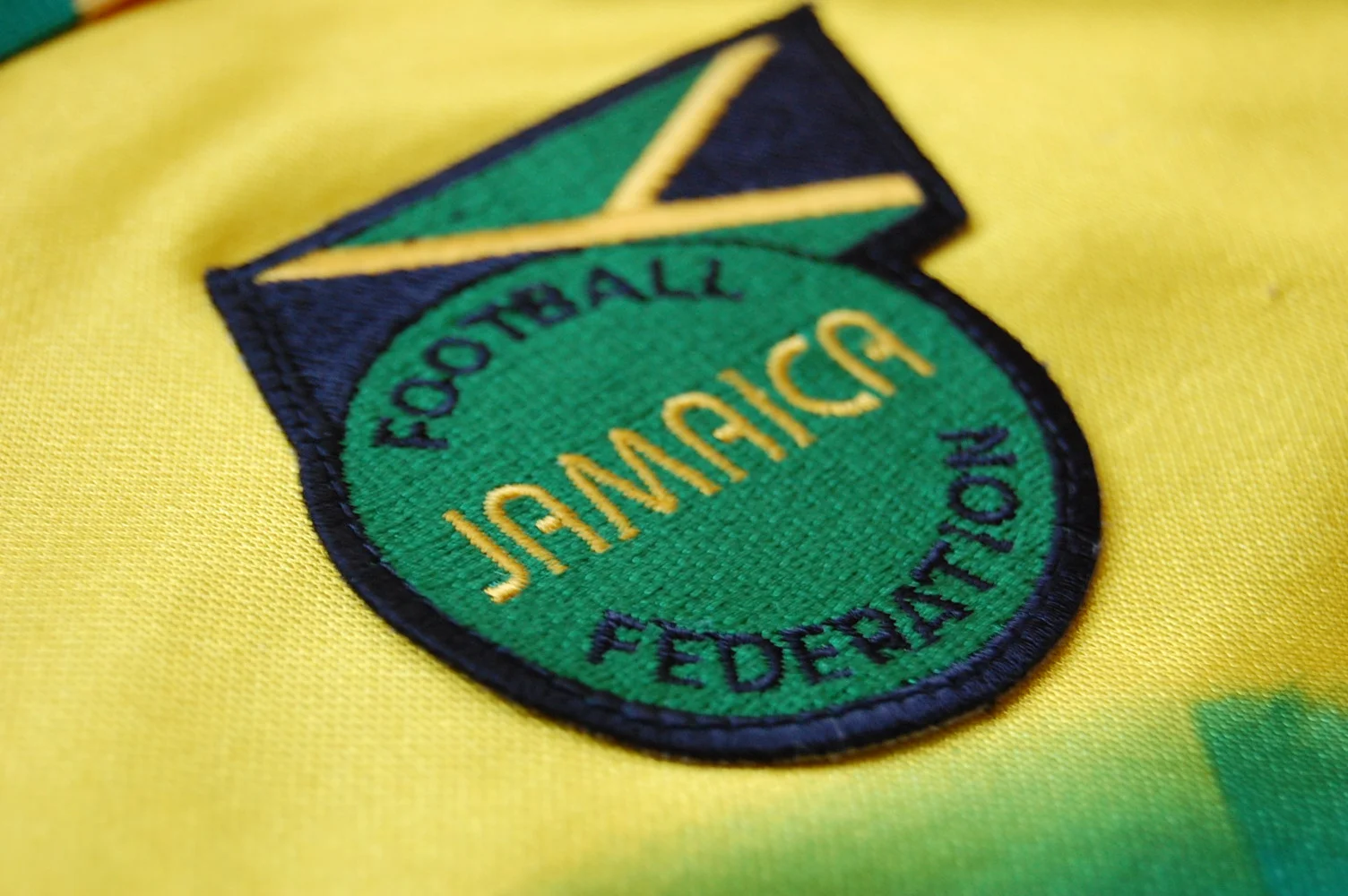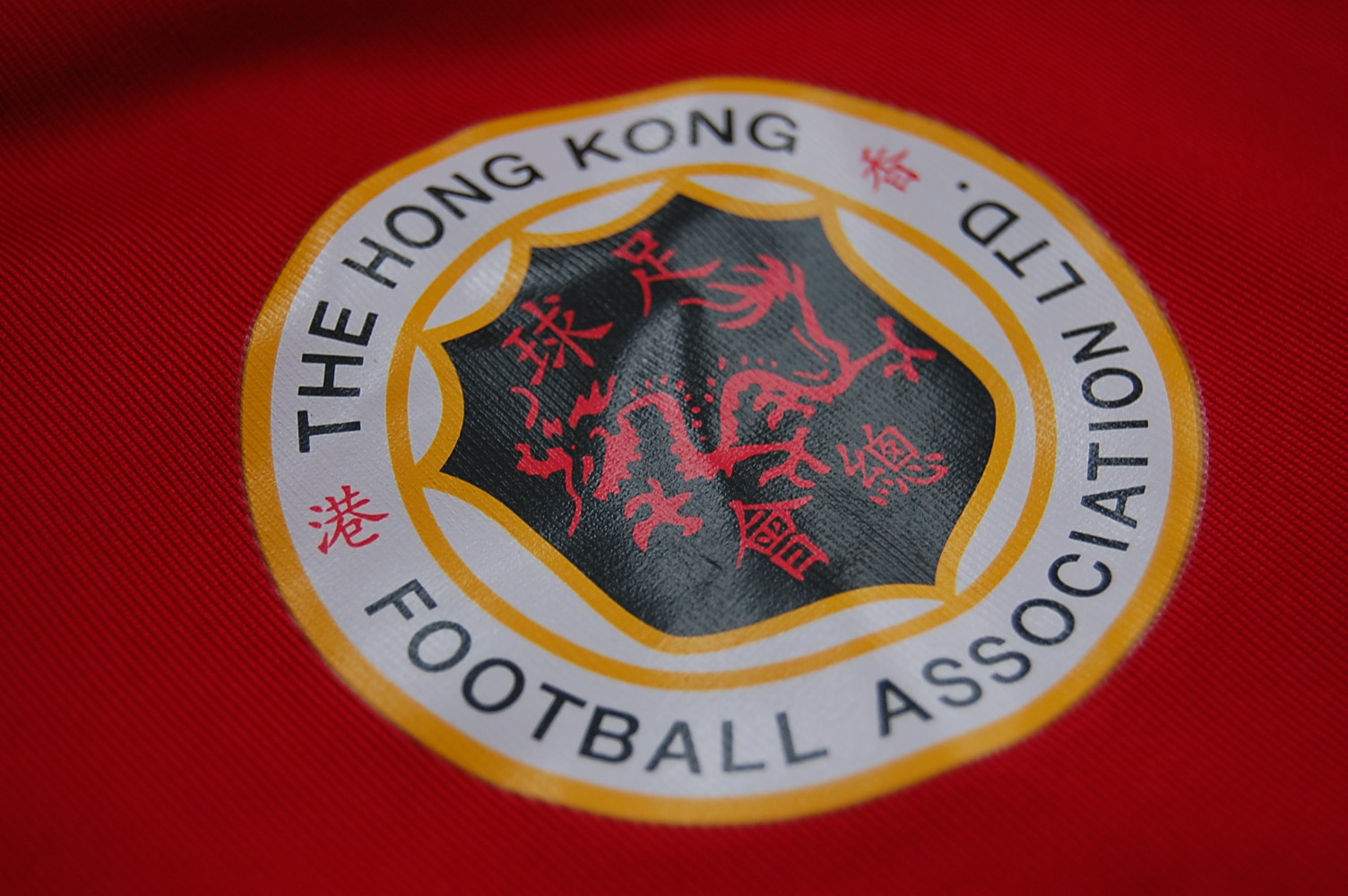Jamaica
Home; 2001-2002
It may be a result of growing up in the 90s, but Jamaica has always been a country that intrigued me. It began with ‘Cool Runnings’ bringing Jamaican bobsleighing to rainy Ireland in the first half of the decade. Then in 1998, with Ireland failing to reach that summer’s World Cup in France, the Reggae Boyz (as the football team is known) made an ideal replacement in my eyes as plucky underdogs from a small island, with a shirt that became instantly iconic and was like nothing I had seen before at that point. 1998 was a great year for Jamaican football in general. That summer may be famous for them making their first and to date only World Cup appearance, but a few months prior to that was pretty special too.
Like many happy tales, it began with a little bit of good fortune. Having failed to qualify for the still-fledgling CONCACAF Gold Cup, to be held in February of that year, they were given a surprise route back in when Canada gave up their spot and withdrew from the competition. The Canadian’s offical line was that they wanted to give Jamaica a competitive run-out before the World Cup, and so were willing to step aside. Very generous indeed. There is an alternative version in some quarters which suggests that at the time the Canadian Soccer Association were low on both money and players (European clubs were reluctant to release players in the second half of their club seasons) and so saw an out from the cost of having to send a team to the competition. We may never know…
Either way, the Reggae Boyz were drawn into a tough group when they did get there. As well as Guatemala and El Salvador (both of whom had qualified for the previous Gold Cup, unlike Jamaica), Brazil were also in the group, having been invited by CONCACAF for the second time. Unlike their previous appearance, Brazil brought a senior squad rather than their u-23s and while it may not have been at full strength, it did contain 6 players who would make Brazil’s World Cup squad just months later (as well as Ramario who would miss the World Cup through injury). So no easy task for Jamaica to make an impact.
But make an impact they did. Holding Brazil to a nil-nil draw, before beating Guatemala and El Salvador, they topped the group and made it to the Semi Finals where they were only knocked out by a Mexican extra time golden goal. The Jamaicans would eventually finish fourth, after a defeat to Brazil in the 3rd-place play off with Romario scoring the games only goal. So in shades of Denmark at Euro ‘92, a team which didn’t even qualify on the field ended up doing themselves proud (they actually ended up with a positive goal difference after 6 matches at the Cup). Jamaica didn’t fare quite so well at the World Cup, but they did beat Japan to finish third in the group. Again, they can be proud of their achievements.
But all that was done in a different (better) Kappa shirt, which directly preceded the Uhlsport number I present here. I do like this shirt, even if the colours just aren’t quite vibrant enough for what you would expect from a Jamaican shirt. The working of the flag is nice, and the material is strong and tough.
I don’t have any certification that this was match worn or issued, but a few clues tell me it was at least prepared for a Jamaican team. Firstly, the heat pressing is a perfect match for the photographs of teams in the shirt. They are also use professional materials in the heat press. Most convincing for me though is that the front number is there, and using the correct yellow rather than using small black numbers. It is unlikely that back before shirt numbering was its own industry, a person would have had this all put together for a replica. As an aside, in general national teams often don’t go into the mid or high twenties for shirt numbers as squad sizes are often capped. But Jamaica seem to have used somewhat unusual numbering during this time. For example, when playing Costa Rica in 2002, Onandi Lowe stared the game wearing #31 outfield while goalkeeper Donovon Ricketts wore #30.
Finally, you may notice a different Uhlsport shirt being worn in the pictures linked in the previous paragraph. Jamaica actually wore both Uhlsport shirts during this lifetime of this shirt (including in the same qualification competition for the 2002 World Cup) and I’m not quite sure why. There are a few other small, odd things relating to quality control at Uhlsport such as the long sleeve version of my shirt having a Uhlsport logo on the sleeve and the early versions having the chest logo with a black background.
